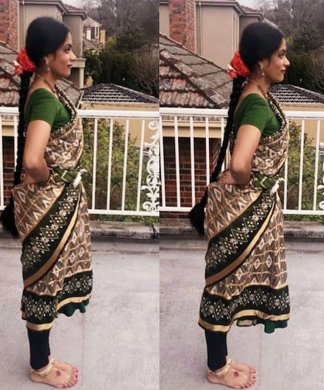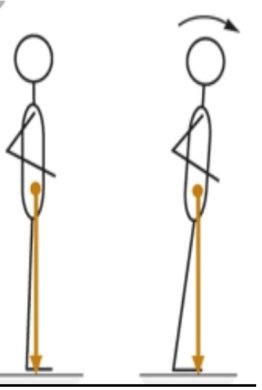
|  |

|  |
 The Bharathanatomy Series: Balance - Postural Control - Sneha Rajagopalan e-mail: sneha.rajagopalan@hotmail.com February 22, 2020  The Bharathanatomy series is back! Over the next few months, we will be looking closely at the concept of balance and its role in movement and dance. To be able to balance means that we are a) able to maintain an upright posture against the force of gravity and b) ensure that our body's centre of mass is exactly above our support base (in dance, this base of support is our feet). In standing, every part of our feet that is in contact with the ground AND the periphery of our feet AND the area in between our feet is our base of support! So, our base of support (BOS) is largest and balance is easiest when we stand in mandala sthana (previous post). Base of support is slightly smaller, and balancing is harder in samapada, even smaller and harder in araimandi and smallest and hardest when we stand on one leg. When we do mettu, it is crazy small and super hard to balance. Now in order to stay upright, we need 2 things. 1. Postural alignment 2. Postural tone POSTURAL ALIGNMENT  This is all about how our body segments are aligned in relation to each other. Refer to photo 2. Here, you have the feet, exactly superior are the ankles, exactly superior are the knees, then the hips, shoulders and head. Everything is in line (photo 3). Also here, our centre of mass is directly over our BOS. Winning at the balance game! In Bharatanatyam though, we stand with a 45 degree lean forward. So, our knees, hips, shoulders and head alignment is past feet and altered. Hence our centre of mass also moves in front and past our BOS! Uh oh! How do we make sure we donít fall on our face now? POSTURAL TONE Certain muscles activate against the force of gravity when our postural alignment pushes our centre of mass out of place. In samapada with a 45 degree tilt, our calf muscles and spinal muscles activate ECCENTRICALLY to pull us posteriorly! Remember eccentric activation is all about elongating to control movement! So in this case, controlling us from falling (moving) forward!  FYI: The yellow arrow and dot in photo 3 shows where our centre of mass usually sits and what happens when our alignment is disturbed. That is, there is a displacement of our alignment in the forward direction. So, in order to not fall, our muscles in our legs, hip complex, lower spine and upper spine and head will produce forces that will pull us in the backward direction. Try this: Stand in Samapada with a 45 degree tilt. Slowly lean forward more. Which muscles do you feel working? If you have any questions or would like an appointment to either recover from an injury or better your dancing, feel free to get in touch. Sneha Rajagopalan is a physiotherapist from Melbourne, Australia, working in the area of rehabilitation of patients with a neurological disorder as well as treatment of sporting related injuries of muscular and/or skeletal origin. A Bharatanatyam dancer of 20 years in the Kalakshetra style, she is currently learning under the tutelage of Archana Raja. She is in the process of starting up her own online physiotherapy practice under the name Bharathanatomy, for rehabilitation and exercise training for the specific population of dancers globally. Post your comments Provide your name and email id along with your comment. All appropriate comments posted with name and email id in the blog will also be featured in the site. |